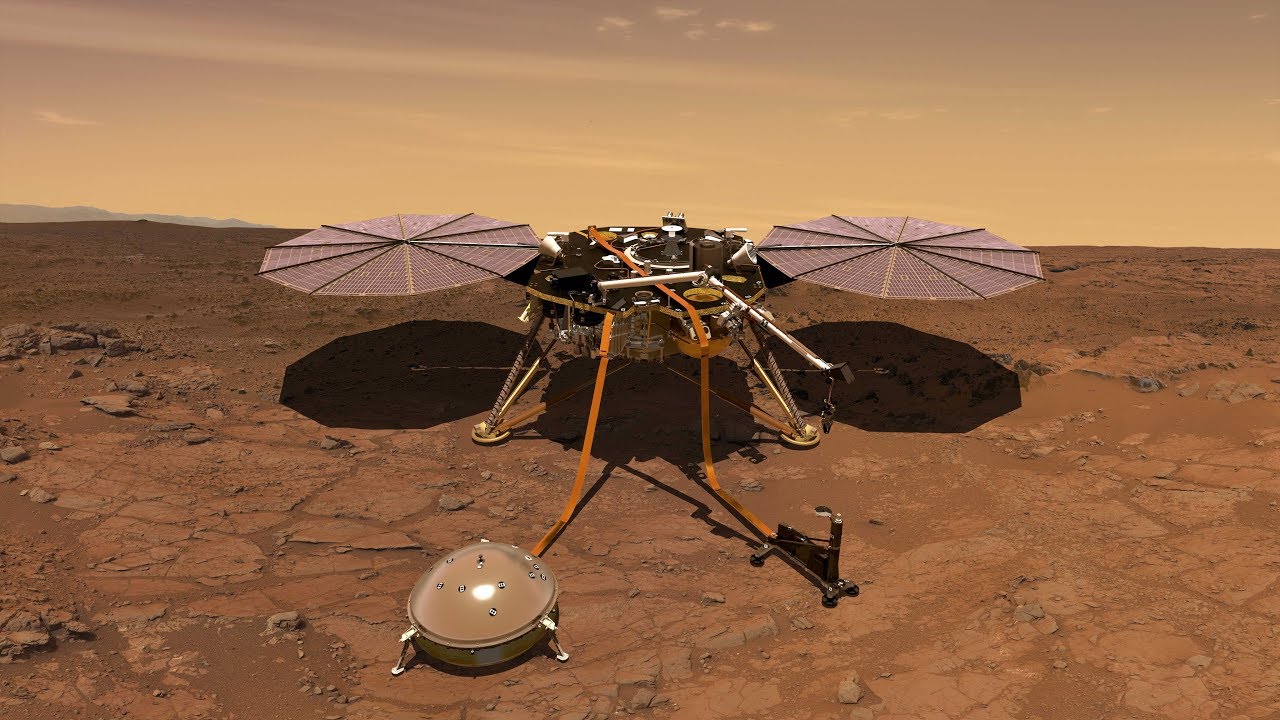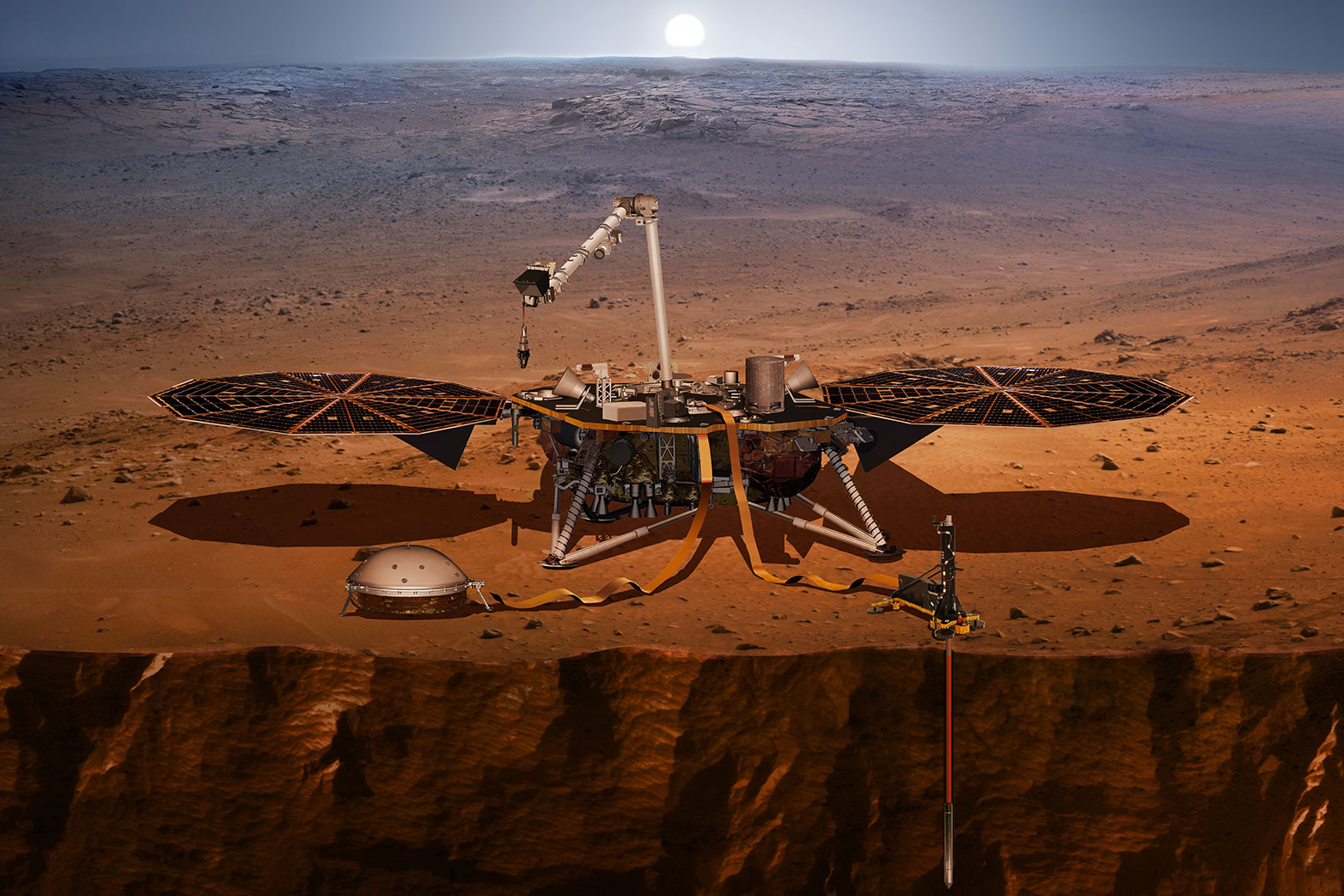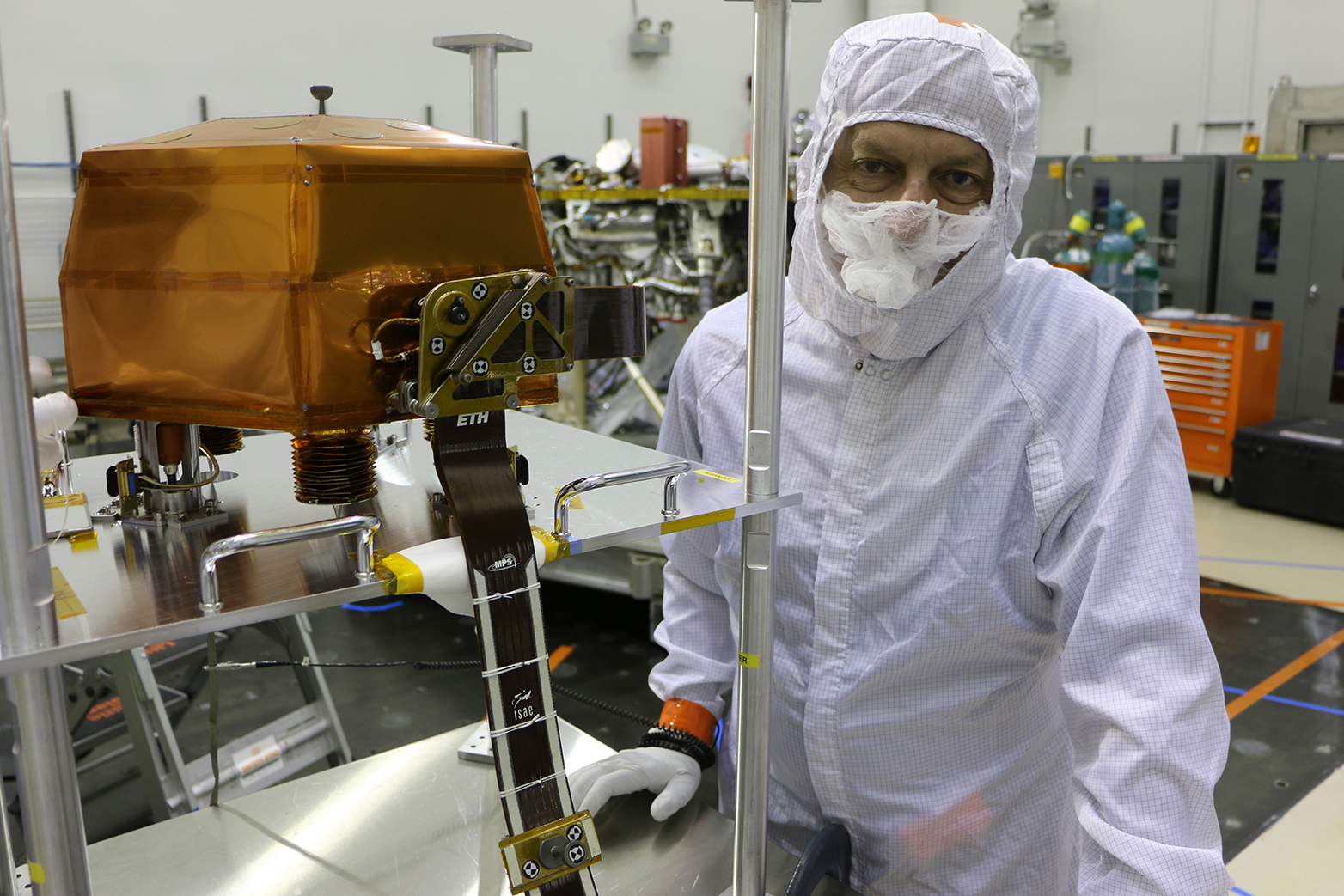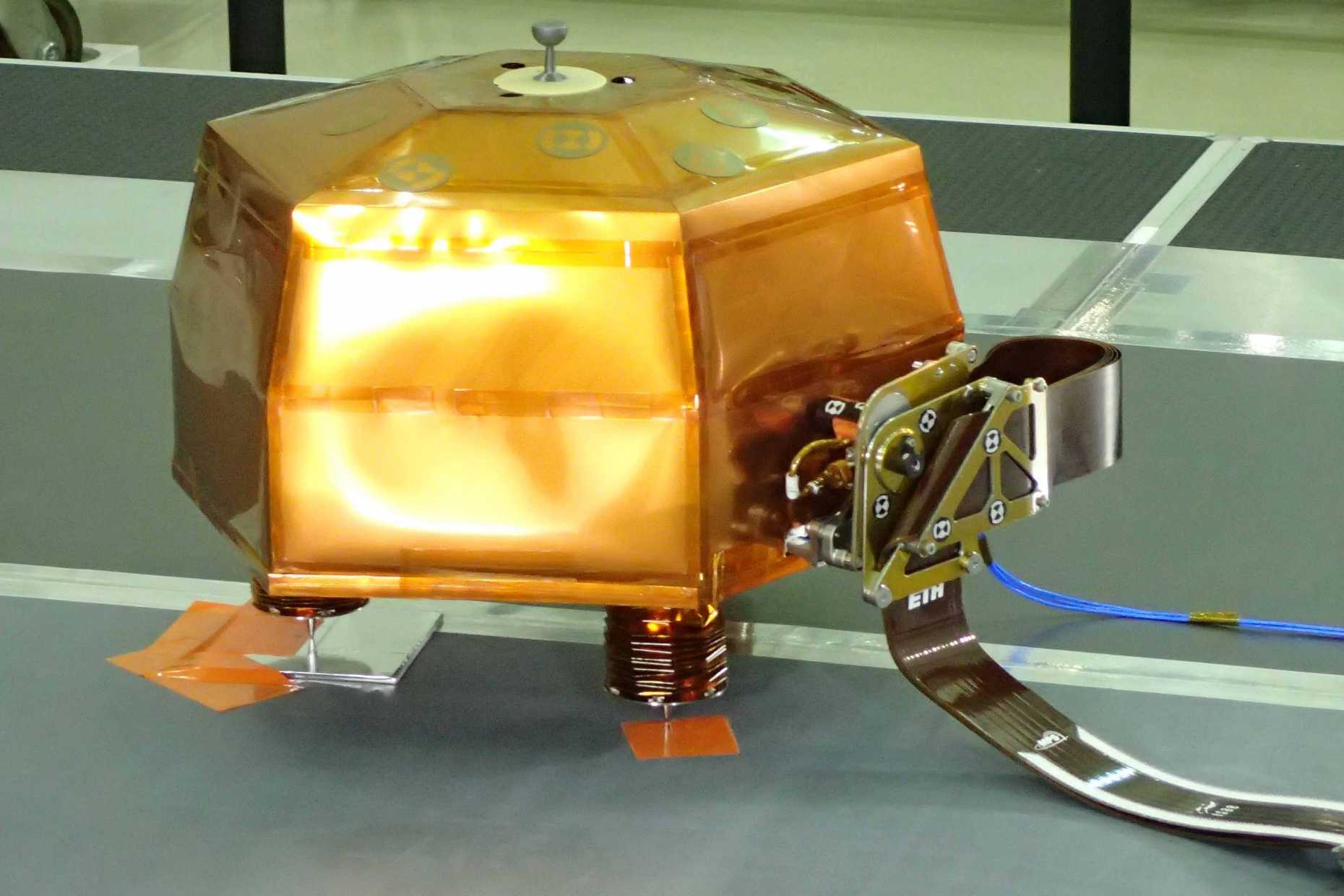InSight mission to Mars lifts off successfully
The Atlas V rocket with the NASA InSight spacecraft left California on Saturday, May 5th, heading for Mars. The spacecraft is carrying a seismometer built with electronics developed at ETH Zurich, and for the first time, it will fly the Swiss flag and ETH logo to the red planet. The seismometer is designed to record seismic waves produced from marsquakes, that will allow scientists to explore the interior of Mars.

Domenico Giardini, professor of seismology and geophysics at ETH Zurich, John Clinton from the Swiss Seismological Service (SED) and Peter Zweifel, heading the engineering team that developed the SEIS electronics, have long been waiting for this moment. At 4.05 a.m. local time, an Atlas rocket lifted off from Vandenberg Air Force Base in California. An hour later, the final boost pushed the rocket beyond the attraction of the Earth, the spacecraft separated and now follows the planned trajectory towards Mars. It will take just over six months for the spacecraft to reach its destination.
The three ETH researchers can breathe a sigh of relief, because on board the spacecraft is their “baby” – a highly specialised electronic control and data acquisition system developed at ETH Zurich and integrated into the InSight lander’s SEIS seismometer. Scientists are planning to use SEIS to record seismic activity and meteorite impacts that will enable them to investigate the interior of Mars.
A sense of relief for the scientists
“We’re very happy about the successful launch, because we’ve been working towards this moment for almost 20 years,” says Giardini, who is in charge of ETH’s side of the Mars mission. “If everything goes well, we may receive the first test data in early 2019. We’re extremely excited about this.”
Until then, the ETH researchers will still need some patience. After a 485 million kilometre trip through space, on 26 November 2018 things will happen fast: in just six minutes, the lander will penetrate the thin Martian atmosphere, a large parachute will slow down its fall, and retrorockets will accompany the final descent for a soft landing on the planet’s vast Elysium Planitia plain.
After landing, a robotic arm will position the seismometer on the ground, next to the lander, and will cover it with a protective shield. It will take about two months before all the instruments are set up and their functions tested. “We will have to survive some tense moments before we know for sure whether the scientific instruments have arrived safely on Mars and are functioning,” says Zweifel. Although the electronics were tested extensively under conditions simulating those during the space flight and on Mars, this will become clear only when the instruments have landed on the red planet.
Marsquake service at ETH the first to process data
The data recorded on Mars will be transmitted daily to the Earth, with a 20 minutes delay due to the large distance from Mars. After being collected through the NASA’s Deep Space Network and pre-processed at France’s space agency CNES, the data will be analysed every day by the Marsquake service at ETH Zurich, to detect and locate seismic events and impacts on Mars.
The Marsquake service will be the first to interpret the data. “Only when we start routinely receiving the data at our data centre and can identify and locate seismic signals will we be able to call the mission a success,” Clinton says. From spring 2019, the researchers expect to begin routine analysis of the seismic data, which should last for at least one Martian year, equivalent to two years on our planet. This daily analysis will provide the basis for all further scientific investigations and for requesting additional data from the station.
The seismometer’s core task is to measure the seismic waves caused by meteorite impacts or marsquakes. The highly sensitive instrument will record signatures from different waves that are reflected and refracted as they encounter different layers inside the planet, which will allow scientists to infer the nature and composition of Mars. The scientists hope to learn about the internal structure of Mars and make conclusions about similar processes on Earth and about the origin and evolution of planets in the solar system.
Studying the 'Inner Space' of Mars
InSight, short for Interior Exploration using Seismic Investigations, Geodesy and Heat Transport, is a Mars lander designed to give the Red Planet its first thorough checkup since it formed 4.5 billion years ago. It is the first outer space robotic explorer to study in-depth the "inner space" of Mars: its crust, mantle, and core.
Studying Mars' interior structure answers key questions about the early formation of rocky planets in our inner solar system - Mercury, Venus, Earth, and Mars - more than 4 billion years ago, as well as rocky exoplanets. InSight also measures tectonic activity and meteorite impacts on Mars today.
The lander uses cutting edge instruments, to delve deep beneath the surface and seek the fingerprints of the processes that formed the terrestrial planets. It does so by measuring the planet's "vital signs": its "pulse" (seismology), "temperature" (heat flow), and "reflexes" (precision tracking). This mission is part of NASA's Discovery Program.
Further information www.insight.ethz.ch



